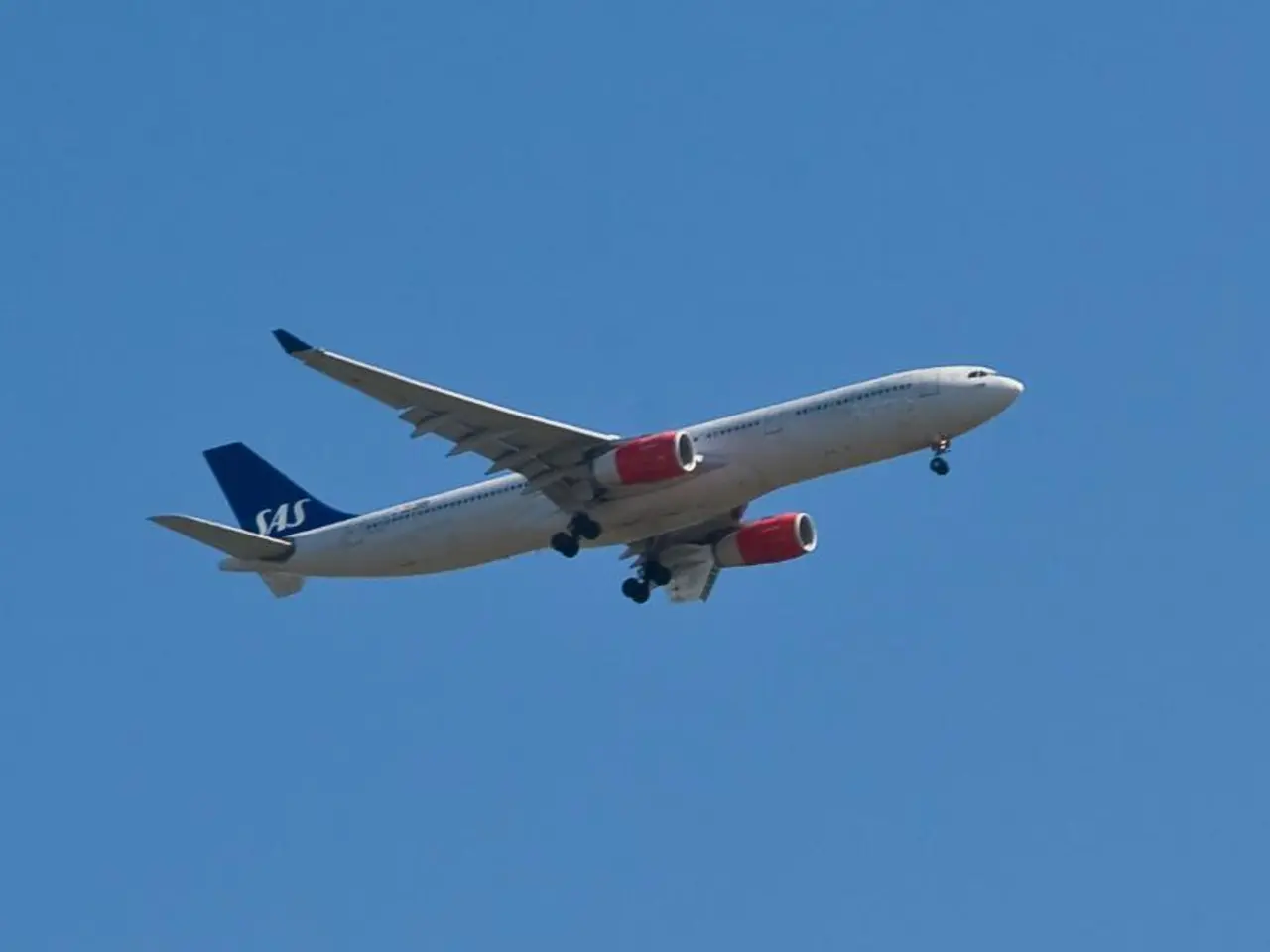MC-130J Evaluates Aerodynamic 'Fl_{âte}rs' to Decrease Drag and Lower Fuel Expenditure
The U.S. Air Force has commenced flight testing of finlets on an MC-130J special operations aircraft, marking a significant step towards enhancing fuel efficiency and extending the operational range of the C-130 fleet [1][3].
The finlets, small aerodynamic fins, were first introduced on C-130 aircraft in July 2025. They are mounted on the lower aft fuselage and are designed to reduce drag by reshaping airflow and improving pressure distribution, thus reducing flow separation [1][3]. The developer, Vortex Control Technologies, estimates that these finlets can reduce the C-130J’s drag by about 6 to 8 percent [1][3].
This seemingly small improvement in drag and fuel efficiency can have a substantial impact on the C-130 fleet, which is extensively used for transport and special operations missions. The cumulative effect across the fleet can result in significant fuel savings and cost reductions, thereby extending the aircraft’s reach and combat readiness [3].
The finlets testing started on July 16, 2025, at Eglin Air Force Base, Florida, and will continue at Edwards Air Force Base, California, including airdrops [2]. The 96th Test Wing added finlets to C-130s with support from various organisations, including the Air Force Operational Energy Office, Air Force Special Operations Command, the Special Operations Forces/Personnel Recovery Program Office, the Air Force Research Laboratory, and the Defense Innovation Unit [4].
Roberto Guerrero, deputy assistant secretary of the Air Force for operational energy, safety, and occupational health, stated that the finlets milestone is a step towards modernising the fleet, reducing costs, and increasing combat capability [4].
The Air Force has experimented with similar aerodynamic improvements on other aircraft, such as winglets on KC-135s and microvanes on C-17s [2]. The Air Force is currently in the final phase of evaluating microvanes on the C-17, inching closer to deploying them fleetwide after more than two years of testing [2].
The savings from reducing drag on hundreds of planes making thousands of flights could theoretically amount to millions of dollars. Moreover, the finlets could extend operational reach and enhance readiness in contested logistics environments [3].
The budget documents state that the KC-135 winglet program was terminated to support Administration priorities during Fiscal Year 2026 President's Budget Request [2]. However, the plan is to install finlets on the entire C-130J fleet, which includes Super Hercules cargo aircraft, AC-130J gunships, HC-130J helicopter refuelers, and WC-130J "weatherbirds" [3].
The concept of adding small aerodynamic elements to aircraft has been around for decades. As the Air Force continues to explore ways to improve fuel efficiency and operational range, the addition of finlets to the C-130 fleet represents a promising development.
References: [1] https://www.airspacemag.com/military-aviation/finlets-are-coming-to-the-c-130-fleet-180977884/ [2] https://www.airforcemag.com/drone-warfare/220726-finlets-on-mc-130j/ [3] https://www.defenseone.com/technology/2022/07/u-s-air-force-tests-finlets-c-130-special-operations-aircraft-reduce-drag/191737/ [4] https://www.defensenews.com/air/2022/07/22/u-s-air-force-tests-finlets-on-mc-130j-special-operations-aircraft-to-improve-fuel-efficiency-and-operational-range/ [5] https://www.airforcemag.com/drone-warfare/220726-finlets-on-mc-130j/
- The Air Force's application of finlets on an MC-130J aircraft is a significant stride towards defense and space force, as it aims to boost fuel efficiency and extend the operational range of the C-130 fleet.
- The integration of finlets, a form of aerodynamic fins, into C-130 aircraft not only reduces drag but also improves airflow and pressure distribution, potentially increasing combat capability.
- The aerospace industry and the finance sector could significantly benefit from the deployment of finlets across the C-130 fleet, as the resulting fuel savings and cost reductions could potentially amount to millions of dollars.
- The development and testing of finlets represent a modernization effort within the military, leveraging advanced technology to enhance combat readiness and extend operational reach, especially in contested logistics environments.
- The finlet technology has been under exploration for decades, illustrating the military's continuous pursuit of innovations to improve aircraft fuel efficiency and operational range within the broader field of technology.








